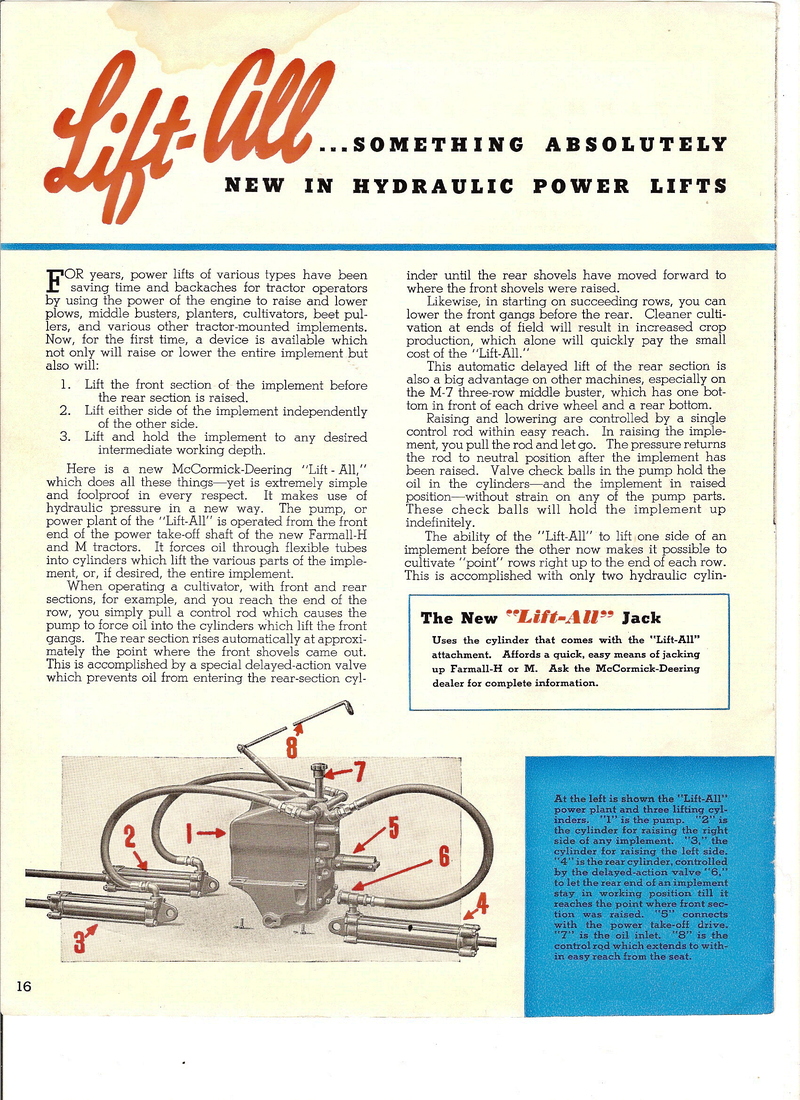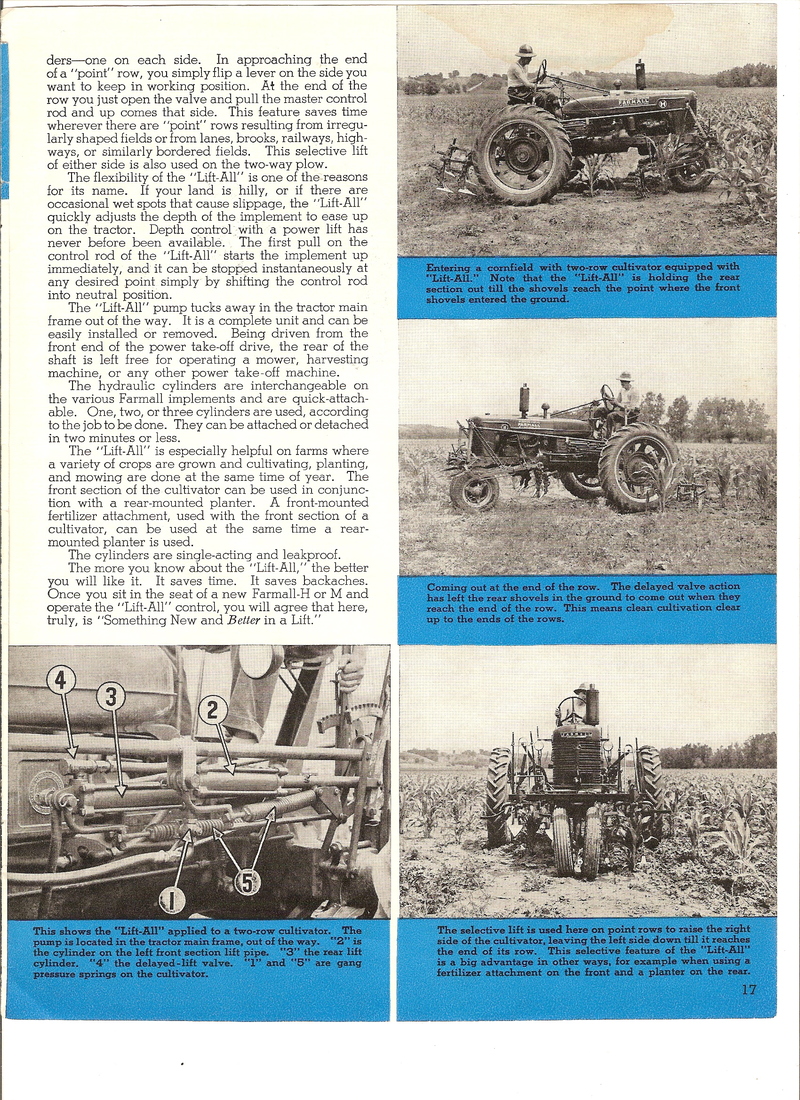Ok, this may be a pretty novice question. What"s the difference between normal hydraulics and live hydraulics? Specifically on a Farmall H. Are the "live" hydraulics where you have to remotes and the pump actually will push a cylinder out and suck it back in, versus the single outlet that will push a cylinder out buy needs mechanical pressure against it to retract?
Now that I"ve got that out of the way, here"s the second question. I bought a Farmall H at a farm auction. Serial number checks out as a 1944. It has the original factory hydraulic control lever (like is on our original Farmall M, but no hoses or remotes. I believe the belly pump is working, because I added some hydraulic fluid and when tractor is ideling, if i move the lever it pulls the motor down slightly. So, if I want to run a sickle bar mower behind this tractor I need the remote(s) to raise or lower the bar. On both sides of the H casing close to the belt pully and hydraulic lever is a short pipe with an elbow and capped/Plugged. If i"m sitting on the tractor, I know there"s one on my right hand side, and I believe one on my left hand side. Is one a positive flow line and the other the return line from the implement? If so, do I need to put on 2 remote connectors or just one? I can get a shop to make the hydraulic lines up, but where do I buy the remote connectors?
Thanks
Now that I"ve got that out of the way, here"s the second question. I bought a Farmall H at a farm auction. Serial number checks out as a 1944. It has the original factory hydraulic control lever (like is on our original Farmall M, but no hoses or remotes. I believe the belly pump is working, because I added some hydraulic fluid and when tractor is ideling, if i move the lever it pulls the motor down slightly. So, if I want to run a sickle bar mower behind this tractor I need the remote(s) to raise or lower the bar. On both sides of the H casing close to the belt pully and hydraulic lever is a short pipe with an elbow and capped/Plugged. If i"m sitting on the tractor, I know there"s one on my right hand side, and I believe one on my left hand side. Is one a positive flow line and the other the return line from the implement? If so, do I need to put on 2 remote connectors or just one? I can get a shop to make the hydraulic lines up, but where do I buy the remote connectors?
Thanks



